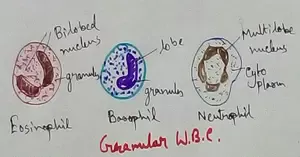Plant and its Leaves
We will discuss about the plant and its leaves. Leaves are one of the main parts of the plant. Leaves of a plant have its own function. A plant bears so many leaves. Mostly leaves are green in color. The leaves are attached to the twigs and branches by the stalks.
Leaves of different plants vary in shape and size but their basic structure is the same. In a leaf there is a network of veins. The main vein starts from the stalk and goes up to the end of the leaf, running through the middle of it. There are many side veins emerging from the main vein.
The leaf is covered with a waxy covering called as cuticle on both surfaces but in the lower area of the flat leaf there are invisible openings called stomata. Stomata can be seen with the help of a microscope.
A leaf prepares food for the plant. Food for plants is prepared by green leaves through the process of photosynthesis.
Water, mixed with minerals reaches the leaves from the soil through the different parts i.e. roots, stem, branches and twigs. The sunlight reaches the leaves through their skin and is absorbed by the chlorophyll. Through the stomata the leaves get air containing carbon-dioxide from the atmosphere. Using the energy of sunlight absorbed by the chlorophyll leaves change water and carbon dioxide into a kind of sugar (i.e. carbohydrates) and oxygen is given out. Some of the sugar is used by the plant as food to grow. Some of the sugar is changed into starch. The rest of the sugar and the starch are stored in different parts of the plant.
The food is stored in roots, for example as in carrot.
The food is stored in grains, for example as in wheat and gram.
The food is stored in stem, for example as in sugarcane.
The food is stored in fruits and vegetables, for example as in papaya.
The green leaves are called the food factories of the plant as food is prepared there.
The process of making food by the leaves of a plant in presence of sunlight absorbed by chlorophyll is called photosynthesis.
The process of photosynthesis may be represented as-
Generally we know leaves are green in color but some plants like cactus or mushroom do not have green leaves. Cactus makes food in its green stem and mushroom gets its food from decaying plants.
From Plant and its Leaves to HOME PAGE
Recent Articles
-
Formed Elements of Blood | Erythrocytes | ESR |Leukocytes |Neutrophils
Jan 15, 26 01:25 AM
Formed elements formed elements are constitute about 45 % of blood afeias haematocrit value packed cell volume mostly of red blood corpuscles and are of 3 types- erythrocytes, leukocytes and blood pla… -
What Is Plasma? | Blood Plasma | Proteins | Nutrients | Cholesterol
Nov 07, 25 10:29 AM
Blood is a mobile fluid which is a connective tissue and is derived from the mesoderm like cell any other connective tissue. Colour of blood is reddish and that flows inside the blood vessels by means… -
Disorders of Respiratory System | Tuberculosis | Pleurisy | Emphysema
Oct 28, 25 11:39 PM
Tuberculosis is very common disease and is caused by a type of bacteria called Mycobacterium tuberculosis. This disease causes different trouble in the respiration and infection of several parts of th… -
Regulation of Respiration | Respiratory Centres | Inspiratory Area |
Oct 14, 25 12:13 AM
Respiratory Centre is the area that controls the rate of respiration and it is observed to be located in medulla oblongata and pons. Respiratory Centre has the following will dispersed components like… -
Explain Transport of Gases | External Respiration | Tissue Respiration
Oct 09, 25 11:35 PM
In humans gaseous exchange is completed in the following ways the steps are - External Respiration or Breathing - Breathing in false taking in of Oxygen and giving out of carbon dioxide in the body. M…






New! Comments
Have your say about what you just read! Leave me a comment in the box below.